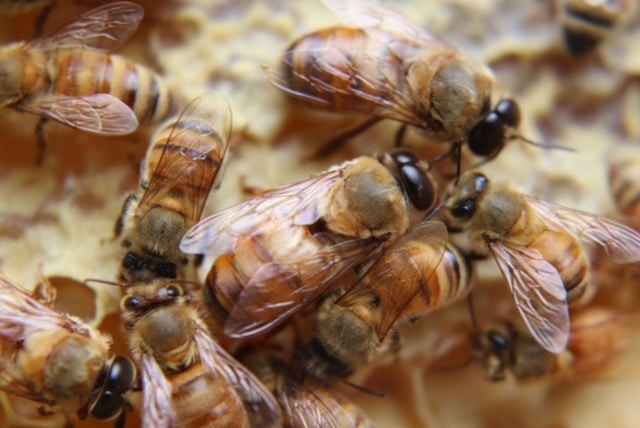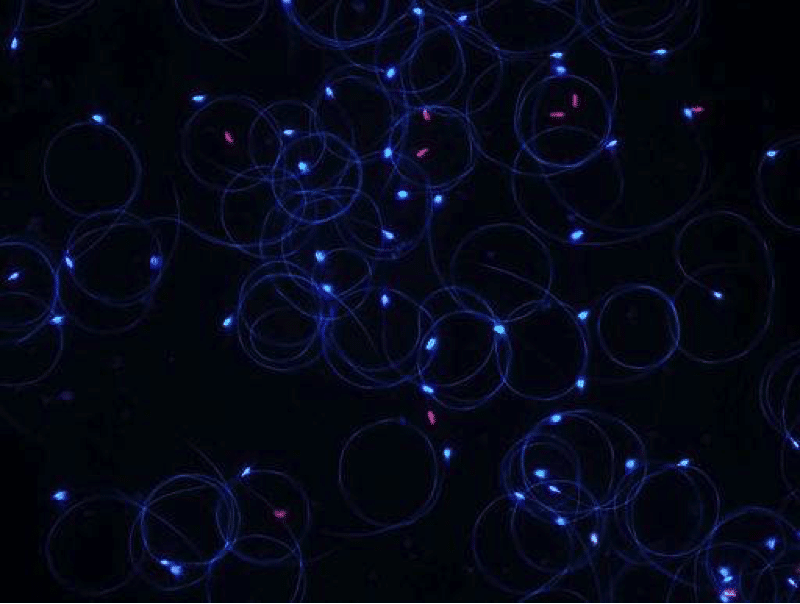Sperm Viability, Queen Failure & Colony Health
by Kristian Demary

Little attention has been given to the health of drones (male) honey bees. After all, they do not forage for pollen and nectar. They are, however, critical to the fitness of a colony. During the queen’s mating flight, she mates with multiple drones (over 10), which not only supplies her with a lifetime worth of sperm, but also ensures genetically diverse offspring. What does sperm viability and colony failure have in common? Queen failure. In North America, beekeepers have seen an increase in queen failure with 50% or more of their queens needed to be replaced within 6 months as opposed to 2-3 years. What could lead to queen failure? Some possible causes for queen failure are: poor mating, pesticides, and pathogens.
Two studies (Pettis et al., 2016 and Straub et al., 2016) looked at the possible causative factors in queen failure and both studies point to reduced sperm viability. Pettis et al. (2016) tested sperm viability from queens that beekeepers rated as healthy or failing. The healthy queens had significantly higher sperm viability (av.=92% alive) compared to failing queens (av. 54-55%). They also investigated a possible cause of sperm death in the queen’s sperm storage area (spermatheca): extreme temperature spikes (4°C, 40°C). Mated queens from the same commercial breeder were randomly assigned to either control (30°C), or treatment groups of: 1, 2, or 4 hours at 4°C or 1, 2, or 4 hours at 40°C. Sperm viability was then assessed 6 days later from sperm stored from the queens’ spermathecae using fluorescent dyes: live cells are dyed green, and dead cells are dyed red. Exposure of queens to either extreme temperatures, even for just one hour, resulted in a significant reduction in sperm viability. Pettis et al. (2016) also sampled newly mated queens obtained from 6 different commercial breeders. They showed a wide variation in not only sperm viability (60-90%) but also in pathogen levels (DWV, BQCV, and Nosema ceranae). Deformed Wing Virus (DWV) and Nosema ceranae are transmitted via multiple routes, including drone semen.
Researchers from the University of Bern, tested sperm viability in drones feed pollen with or without neonicotinoid pesticides (Straub et al., 2016). There was a significant reduction (39%) in alive sperm in drones feed pollen with pesticides (Fig. 1). In addition, there was a significant reduction in the lifespan of drones feed pollen with pesticides compared to control drones. They demonstrated both lethal and sublethal effects of commonly used neonicotinoid pesticides. Since a reduction in sperm viability is associated with queen failure, neonicotinoid insecticides not only impact the queen’s fitness, but also impact the success of the whole colony.
How Can We Better Protect Drones?
We need to decrease drone exposure to harmful chemicals, pathogens, and Varroa mites.

References:
Pettis et al. (2016) Colony failure linked to low sperm viability in honey bees (Apis mellifera) queens and an exploration of potential causative factors. PLoS ONE 11(2):e0147220
Straub et al. (2016) Neonicotinoid insecticides can serve as inadvertent insect contraceptives. Proc. R. Soc.B 283:20160506.